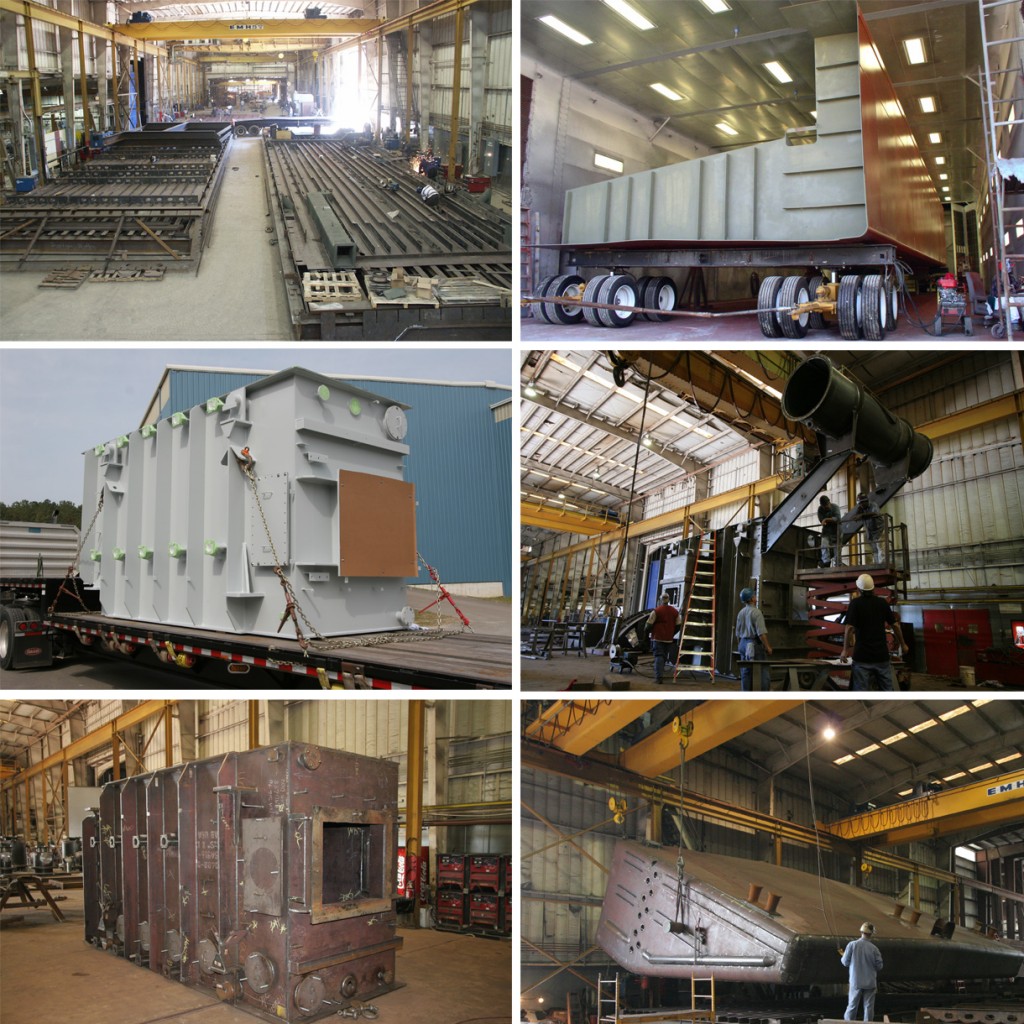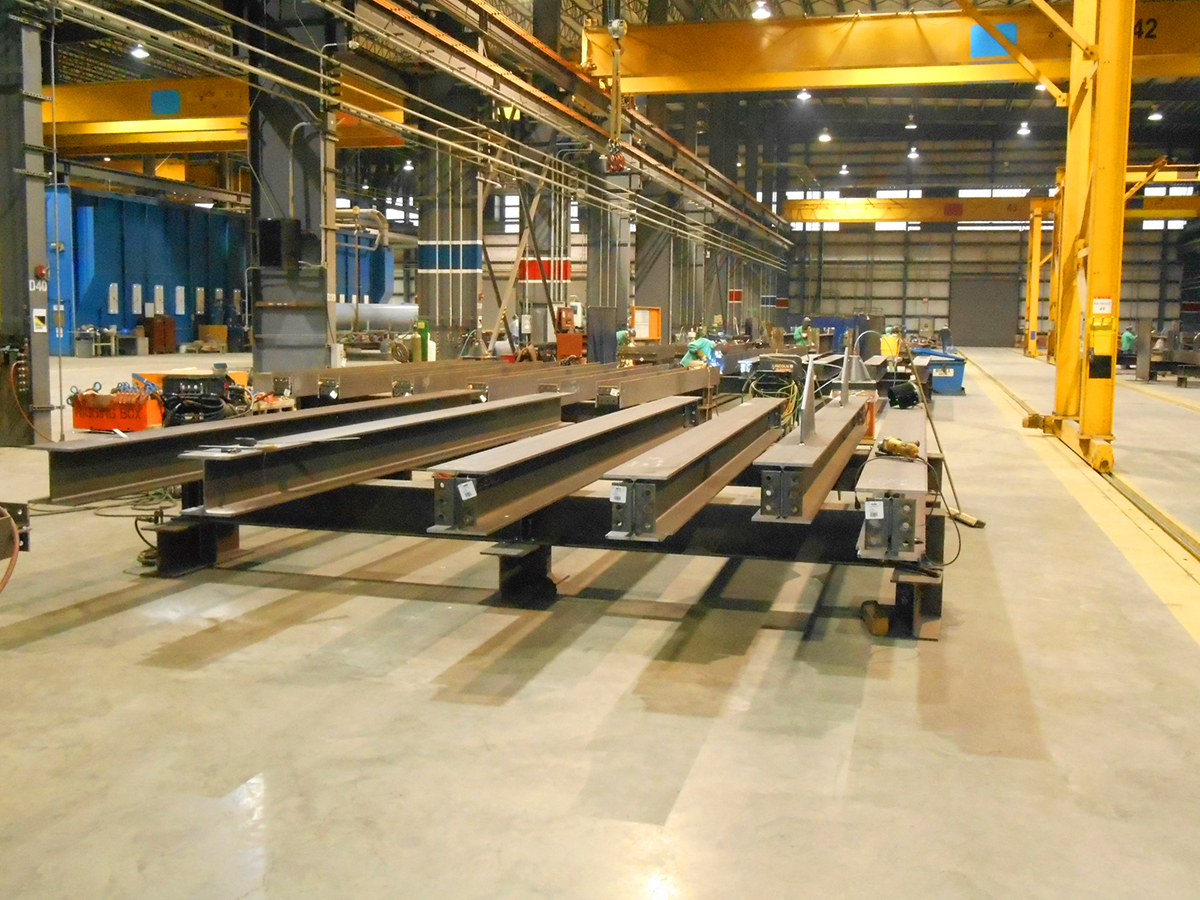Advanced Steel Fabrication Melbourne: Building the Future Today
Advanced Steel Fabrication Melbourne: Building the Future Today
Blog Article
Comprehensive Evaluation of Cutting-Edge Techniques in Steel Construction Market
As the steel manufacture sector remains to develop, the combination of innovative strategies has ended up being essential for staying affordable and fulfilling the needs of modern manufacturing requirements. From laser reducing improvements to the application of robotics and 3D printing in steel manufacturing, the landscape of manufacture strategies is swiftly changing. With each technology bringing its own collection of challenges and advantages, an extensive analysis of these strategies is critical for companies aiming to improve their processes, enhance precision, and ultimately, boost the high quality of their steel construction output. In this dynamic industry where innovation plays an essential role, comprehending the nuances of these sophisticated strategies is not just a choice yet a need for those seeking to advance in the ever-evolving world of steel construction.
Laser Cutting Innovations
In the realm of steel manufacture, laser reducing innovations have revolutionized the precision and efficiency of metal shaping processes. By harnessing the power of focused laser beams, producers can now achieve unrivaled levels of precision when reducing with numerous kinds of steels. This innovation makes it possible for intricate styles to be performed with very little material wastage, making it an affordable solution for industries needing high accuracy components.
One of the vital advantages of laser cutting is its capability to handle a vast array of materials, consisting of stainless-steel, light weight aluminum, and carbon steel, effortlessly. The procedure generates clean, burr-free edges, eliminating the demand for added ending up steps. The non-contact nature of laser cutting decreases the threat of product contamination, resulting in greater quality end products.
Furthermore, laser reducing equipments can be programmed to make swift, specific cuts, considerably lowering production time compared to conventional cutting techniques. This speed and precision make laser cutting especially suitable for automation atmospheres where efficiency is vital. As innovation remains to breakthrough, laser cutting is positioned to play a progressively essential role in the steel fabrication market.

CNC Machining Innovations
The evolution of CNC machining technologies has ushered in a brand-new period of accuracy and effectiveness in the steel manufacture industry. Computer System Numerical Control (CNC) equipments have revolutionized steel fabrication by providing unmatched precision and repeatability in the production process. Alpha reo. Among the vital technologies in CNC machining is the assimilation of innovative software application systems that make it possible for real-time surveillance and modifications, leading to boosted performance and quality assurance
In addition, the development of multi-axis CNC machines has enabled the fabrication of complex steel components with elaborate layouts that were formerly testing to create. These devices can execute a large range of machining procedures, including milling, drilling, transforming, and grinding, all with high degrees of accuracy.
Moreover, the unification of automation and robotics in CNC machining has structured production procedures, minimized preparations, and minimized the margin of mistake. This assimilation of innovative technologies not only boosts performance yet also guarantees consistent quality throughout all fabricated steel components. In verdict, CNC machining innovations remain to drive improvements in the steel manufacture industry, setting new criteria for accuracy and performance.
Automated Welding Technologies
Automated welding modern technologies have actually transformed the steel construction sector, enhancing efficiency and precision in the welding process. These sophisticated modern technologies use computer-controlled systems to automate the welding process, leading to greater performance degrees and enhanced weld quality. Among the essential advantages of automated welding is the capacity to carry out complicated welds with consistent accuracy, lowering the possibility of errors and Check Out Your URL rework.
Robotic welding systems go to the leading edge of automated welding technologies, providing unrivaled rate and accuracy. These systems can handle a wide variety of welding jobs, from simple to complex, with simplicity (metal fabrication melbourne). By using advanced sensing units and software program, robotic welders can adapt to variants in product and joint geometry, ensuring an attire and reputable weld
Moreover, automated welding innovations boost workplace safety by lessening the exposure of human welders to harmful fumes and extreme warm. As the steel manufacture industry remains to advance, integrating automated welding innovations will be essential for firms wanting to remain competitive and meet the growing needs for premium welded products.
Robotics Combination in Fabrication
Utilizing robotic systems in construction processes has come to be a critical strategy for enhancing efficiency and precision in modern manufacturing settings. Robotics assimilation in steel fabrication supplies a myriad of advantages, including enhanced efficiency, enhanced quality assurance, and improved security procedures. These innovative robotic systems are geared up with sophisticated sensors and programs capabilities, enabling them to perform elaborate tasks with a high level of accuracy and repeatability.
One of the crucial benefits of robotics integration in steel fabrication is the capability to automate recurring tasks, such as material handling, cutting, welding, and assembly processes. This not only accelerates manufacturing cycles but additionally minimizes the risk of human error, bring about higher total item quality. In addition, robots can run 24/7, substantially increasing manufacturing result and conference limited task deadlines.

3D Printing in Steel Manufacturing
Having actually transformed the steel construction industry through robotics combination, the burgeoning expedition of 3D printing in steel production is positioned to more advance the world of contemporary production strategies. 3D printing, likewise recognized as additive manufacturing, supplies extraordinary design flexibility and intricacy, enabling the creation of intricate steel structures that were formerly unattainable via standard manufacturing methods. By making use of computer-aided design (CAD) software application, suppliers can precisely manage the layer-by-layer deposition of steel product, causing components with improved geometries and performances.
One of the key benefits of 3D printing in steel manufacturing is its capability to decrease material waste considerably. Unlike subtractive production processes where excess material is cut away, 3D printing just try this uses the required amount of steel required for the final part. This performance not just results in set you back savings but likewise aligns with sustainable production methods by lessening ecological effect.
Moreover, 3D printing allows fast prototyping and customization, enabling the production of small sets of complex steel elements with short preparations. As the innovation remains to grow and become extra easily accessible, its assimilation into additional info mainstream steel fabrication processes is anticipated to drive advancement and performance throughout the market.
Verdict
Finally, the steel manufacture sector has seen substantial innovations in strategies such as laser cutting, CNC machining, automated welding, robotics combination, and 3D printing. These innovative modern technologies have transformed the means steel items are manufactured, resulting in increased cost-effectiveness, performance, and accuracy. Proceeded financial investment in these cutting-edge methods is important for the sector to stay affordable and meet the demands of modern production procedures.
As the steel manufacture market continues to progress, the integration of innovative techniques has actually come to be important for remaining affordable and meeting the needs of contemporary manufacturing criteria.One of the key benefits of laser cutting is its capability to handle a large array of products, consisting of stainless steel, light weight aluminum, and carbon steel, with ease.Automated welding innovations have actually revolutionized the steel construction industry, improving efficiency and accuracy in the welding process.Having actually revolutionized the steel manufacture industry through robotics integration, the growing exploration of 3D printing in steel production is poised to additional advance the realm of contemporary production methods.In verdict, the steel manufacture industry has seen substantial improvements in techniques such as laser cutting, CNC machining, automated welding, robotics combination, and 3D printing.
Report this page